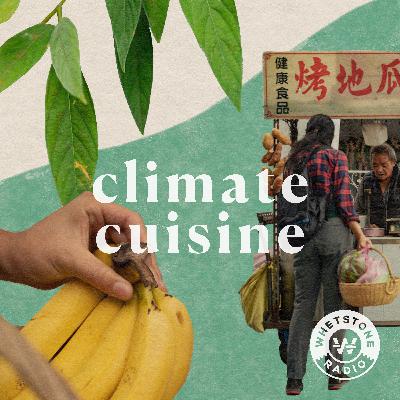Climate Cuisine
Subscribed: 84Played: 980
Subscribe
© 2021
Description
Climate Cuisine is a podcast that explores how sustainable crops are used in similar climate zones around the world.
In the hands of different cultures, a single ingredient can take on many wondrous forms. Staple crops are seldomly confined to time or place, and thrive where they can— if climatic conditions allow. Climate Cuisine profiles how sustainable, soil-building crops that share the same biome are grown, prepared, and eaten around the world. As the world faces alarming upward shifts in base temperature, climate-centric conversations about crops become increasingly important to the resiliency and survival of our food systems.
Climate Cuisine is part of Whetstone Radio Collective. Whetstone Radio Collective creates storytelling dedicated to food origins and culture, with original content centering the perspectives of global majority populations and diasporas.
You can learn more about this podcast at whetstoneradio.com, on Twitter @whetstoneradio, on TikTok and Instagram @whetstonemedia and subscribe to our Spotify and YouTube channel, Whetstone Media, for more podcast content. You can learn more about all things happening at Whetstone at WhetstoneMedia.com.
In the hands of different cultures, a single ingredient can take on many wondrous forms. Staple crops are seldomly confined to time or place, and thrive where they can— if climatic conditions allow. Climate Cuisine profiles how sustainable, soil-building crops that share the same biome are grown, prepared, and eaten around the world. As the world faces alarming upward shifts in base temperature, climate-centric conversations about crops become increasingly important to the resiliency and survival of our food systems.
Climate Cuisine is part of Whetstone Radio Collective. Whetstone Radio Collective creates storytelling dedicated to food origins and culture, with original content centering the perspectives of global majority populations and diasporas.
You can learn more about this podcast at whetstoneradio.com, on Twitter @whetstoneradio, on TikTok and Instagram @whetstonemedia and subscribe to our Spotify and YouTube channel, Whetstone Media, for more podcast content. You can learn more about all things happening at Whetstone at WhetstoneMedia.com.
12 Episodes
Reverse







love your show!
so glad this podcast exists. great work!